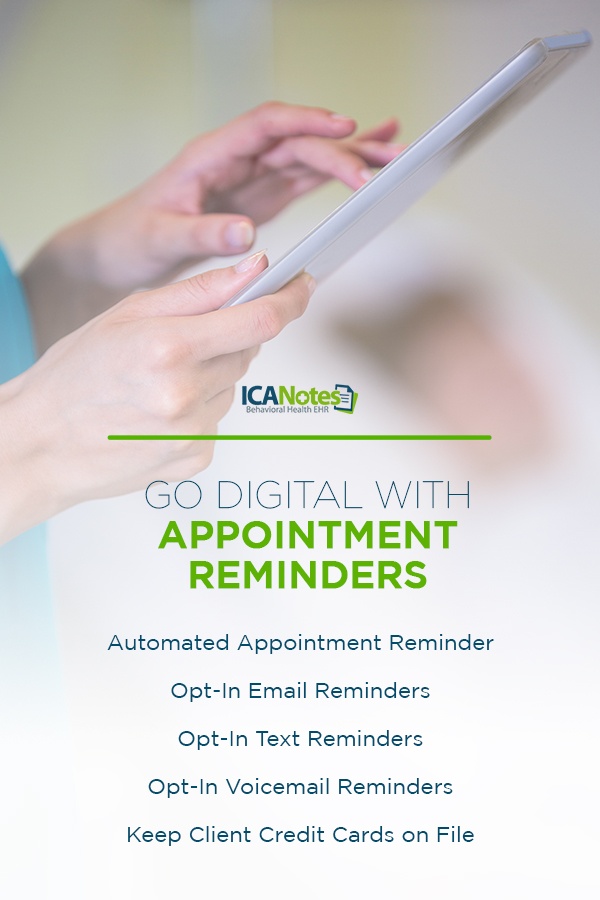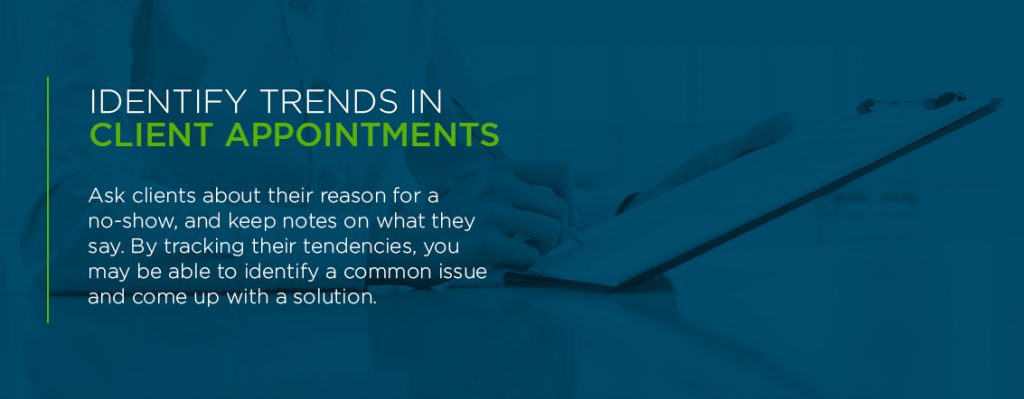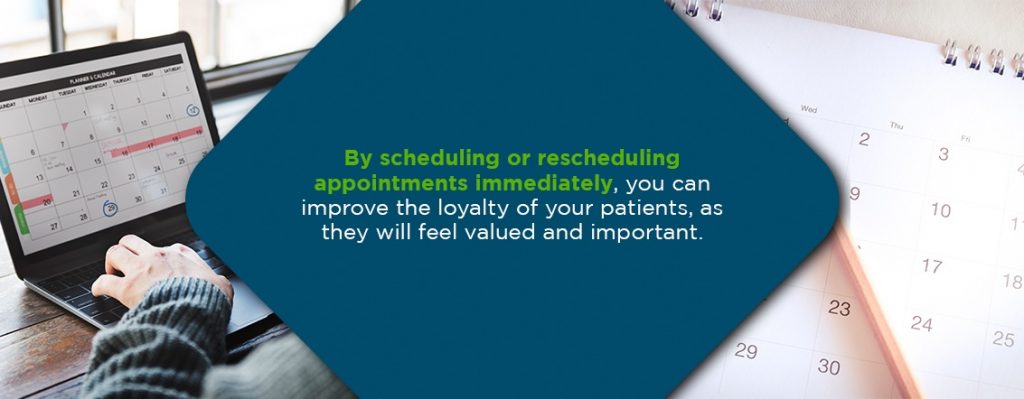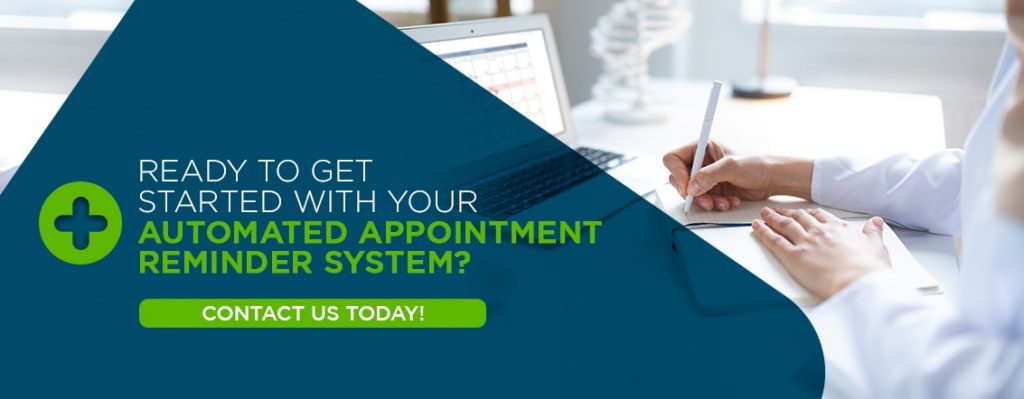How to Minimize No-Shows in Your Therapy Practice

No-shows can be a source of frustration for therapists or clinicians of any practice. When a patient doesn’t show up to an appointment, you lose revenue and waste the time you took to prepare for the meeting. A no-show can throw off the flow of your day.
Have you been experiencing no-shows in your therapy practice? How can you change a client pattern of no-shows? Can you even avoid no-shows?
Though you may not be able to eliminate no-shows, you can take steps to effectively minimize them in your therapy practice.
Table of Contents
- Go Digital With Appointment Reminders
- Allow for Pre-Paid Appointments
- Identify Trends in Client Appointments
- Shorten Wait Time in the Office
- Schedule Appointments Immediately
- Write a No-Show Appointment Policy
- Minimize No-Shows With ICANotes
Go Digital With Appointment Reminders
How can a behavioral or mental health practitioner go digital to reduce patient no-shows? Consider the following digital options for how to reduce no-show appointments.
1. Automated Appointment Reminder
Another one of the ways you may be able to reduce appointment no-shows is by using automated appointment reminders. These days, we’re all busier than ever, so some tasks and appointments are sure to slip through the cracks. Many of your no-shows may be a case of forgetfulness, particularly if there are several weeks between appointments.
An automated appointment reminder can help combat this problem. A brief and courteous reminder will jog a patient’s memory right before the scheduled session. Automated appointment reminders also have the bonus of showing you care about your patients, improving their loyalty.
Today, many people expect reminders from other providers and services, such as their dentists or hairstylists. If you want to use a reliable appointment reminder system, try our automated appointment reminder system from ICANotes. By using an automated appointment reminder, you’ll be providing convenience to your patients, along with saving time and money by replacing your manual system. You’ll be able to eliminate overbooking and dedicate more time to your other responsibilities.
2. Opt-In Email Reminders
One way to send automated appointment reminders to your patients is via email. Your patients can provide their address, so you can contact them via email about appointment reminders. You may also want to allow patients to use email to cancel an appointment.
If email isn’t the most convenient option, consider offering other choices to your patients.
3. Opt-In Text Reminders
Text messaging is another method you can use to deliver automated appointment reminders to patients. Many consumers today have smartphones and rely on appointment reminders delivered via text.
You can also include a request in the text for patients to confirm their appointment via text. You can instruct clients to respond with a simple “yes” or “C” for confirmation. If you opt to allow clients to cancel appointments via text, make sure you also have a late cancellation policy in place.
Inform clients that they need to notify you 24 to 48 hours before canceling, and that canceling later than this means they may still incur a no-show charge. By implementing this condition, you can then fill the empty appointment slot with another available client.
If you would prefer not to have clients confirm their availability via text, you can stick with a simple reminder about the relevant information — the client’s name and the date and time of their appointment.
4. Opt-In Voicemail Reminders
Finally, you can also choose to use voicemail as a way to remind patients about scheduled appointments. If email and text messaging aren’t the right fit for your office or for your patients, voicemail reminders are another viable option.
Some patients prefer to get a call and voicemail reminding them of their appointment, so be sure you have a current phone number on file to contact your client. You may want to ask for an alternative number as well if the primary number gets disconnected or the voicemail box becomes full.
5. Keep Client Credit Cards on File
You can also include in your no-show appointment policy that you intend to charge clients, even if they fail to attend appointments. You can keep client credit cards on file by securing the information digitally.
Charging for a no-show can help recoup lost revenue. When you inform clients they will incur charges for a no-show, they will also be more likely to show up to their appointments, reducing your no-show rate.
Allow for Pre-Paid Appointments
Letting clients pre-pay for their sessions is another excellent way to reduce appointment cancellations or no-shows. One of the best motivators for people is money. If a patient pre-pays for an appointment, they will be more likely to show up, as they will not want to waste their money.
If you are dealing with continual late cancellations from a patient, for example, you can require that they pre-pay for their appointments from now on before you agree to schedule their next appointment.
What if clients are hesitant to pre-pay for appointments? For those who aren’t sure about pre-paying, you can offer incentives that make patients want to pre-pay for their appointments. One way to incentivize patients is by offering discounts. Your patients will save a little money, and you will be able to increase your client retention and decrease your patient no-show rate and late cancellations.
Identify Trends in Client Appointments
To reduce no-shows in private therapy practice, you should note any trends in client appointments. As a behavioral health therapist, how can you use the history or identify the history of some no-shows to avoid future no-shows? How can you use these trends to help your patients and your mental health or behavioral health clinic?
Ask clients about their reason for a no-show, and keep notes on what they say. By tracking their tendencies, you may be able to identify a common issue and come up with a solution. For example, if patients are showing up for an initial appointment, but are skipping out on their follow-ups, you may want to consider what could be causing these no-shows. Possibilities include:
- Not immediately scheduling the next appointment
- Lengthy wait time
- Lack of appointment reminders
- Poor staff or clerk behavior
You may want to examine whether you can improve your customer service. Are your staff members welcoming and helpful or brusque and impersonal? The reception they receive can have a significant impact on your patients’ experience at your office. Patients will enjoy returning to a practice where they feel everyone treats them well and has their best interests at heart. On the other hand, patients are more likely to avoid returning to a practice where they had an adverse experience.
You’ll also want to track no-show trends for an individual. For example, if someone has a history of no-shows on Thursdays and not on Mondays, you could identify this and request that they only make appointments on Mondays. Or, if a patient seems to struggle to keep appointments in the afternoon, but routinely shows up promptly to morning appointments, you may want to suggest that they stick to making morning appointments.
It can be helpful to identify the patients who have a history of no-shows and schedule their appointments for a time that will have less of an effect on your schedule if they do cancel or fail to show up again. While reducing your no-show rate and average cancellation rate may be your priority, you should also keep in mind that eliminating no-shows and cancellations may not be possible. For clients whose no-show habits you can’t change, you may want to prioritize your schedule.
By identifying and addressing trends in client appointments, you can reduce no-shows and client cancellations.
Shorten Wait Time in the Office
Many of us are coping with endless to-do lists, and as such, patients will likely get impatient if they must sit in a waiting room for 20, 30 or 40 minutes. Clients are juggling multiple responsibilities and trying to get a lot done during the day, so you don’t want to waste their time by forcing them to sit in a waiting room for a lengthy period. If your patients have to wait more than 20 minutes, they may not sign up for any future appointments.
By shortening the wait time at your office, you may be able to improve your client retention rate. If you show your patients you value their time, they’ll be more likely to respect you, as well. Failing to show your patients you appreciate them and their time will result in no-shows, late cancellations and, potentially, lost patients.
If you want to keep your patients happy and returning for future appointments, avoid overbooking by scheduling appointments carefully and shorten the wait time for patients. Shorter wait times will demonstrate to patients that their time is meaningful and that they are a respected client.
Schedule Appointments Immediately
Another of the strategies to reduce no-show rates is scheduling patient appointments immediately. The longer patients wait to book a time slot, the more likely they are to forget to do so. When a patient calls, try to schedule them at that time. Try to also prioritize new patients and those with an urgent need, while avoiding double-booking.
You’ll also want to reschedule appointments immediately. As soon as possible, call the client and speak to them about finding a new time to come. You should take the initiative to make the call rather than waiting on clients to contact you, as they have other responsibilities and priorities on their mind and may completely forget about rescheduling after a no-show or cancellation.
Scheduling is an essential function of your front office. Unfortunately, manually scheduling appointments with a paper system or calendar often leads to errors and overbooking. By using behavioral health software, the front office of your practice can schedule, manage and track appointments quickly and effectively. Your staff will be able to conveniently set up appointments and track available times, no-shows and cancellations all in one place.
By scheduling or rescheduling appointments immediately, you can improve the loyalty of your patients, as they will feel valued and important. You’ll also likely be reducing the no-show rate at your practice.
Write a No-Show Appointment Policy
When a new patient schedules a time slot, inform them of your no-show policy. Letting patients know about this upfront will help reduce the likelihood they don’t keep their appointment. Before the session, you should also send potential clients paperwork that includes the no-show policy.
By providing patients paperwork in advance, you’ll save time in your initial meeting. Clients will have time to review these policies before the first appointment, and you’ll be able to answer any questions they have when you meet for the session.
What to Include in Your No-Show Policy
How do you write a no-show appointment policy, and what specifics should you include?
- The amount of time before an appointment that clients can cancel
- What will happen if the client cancels late or fails to show up
- What the fee is for a no-show
- Why the no-show policy is essential for your practice
- A statement that a no-show policy is not a punishment or penalty
The details of what to include in your no-show policy depend on your preferences and what works for your practice.
How to Implement a No-Show Policy
How can you implement a no-show policy? Write it down and make it available for everyone to see, particularly for your clients and office staff. Repeat the information in your client intake forms, display it on your front desk and feature it prominently on your website. You will also want to verbally remind clients of your standards during each appointment.
You should also provide clients with appointment cards before they leave your office. This reminder should state the date and time of their next appointment. Alternatively, you can immediately send this information to the client via text if they prefer a text to a physical appointment card, which is easy to lose.
Though you can be lenient for emergencies, remember that your time is just as valuable as your clients’ time.
Minimize No-Shows With ICANotes
No-shows can present schedule and revenue issues for an office or practice, but you can also view them as an opportunity. After a no-show, you can reach out and connect to a patient. You’ll demonstrate that you value them and that you’re willing to work with them to figure out the best times and days for their appointments.
How can ICANotes help with minimizing no-shows? You can use our appointment reminder feature in the patient portal to help patients remember their appointments.
Ready to get started with your automated appointment reminder system? Start your free trial from ICANotes today.
Related Posts
What Are the Most Important Practice Management Features for Behavioral and Mental Health Clinicians?
The Benefits of a Paperless Therapy Practice
Tips for Improving Psychotherapy Patient Retention




